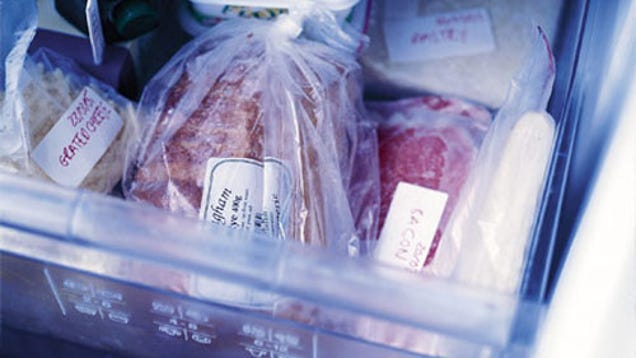Principles Of Food Processing And Preservation
Data: 2.09.2017 / Rating: 4.6 / Views: 599Gallery of Video:
Gallery of Images:
Principles Of Food Processing And Preservation
Food Processing: Principles and Applications is a comprehensive resource that explores the basic and applied aspects of food processing. It describes the physical, chemical, and microbiological basis for each method of preservation. UNIT I PRINCIPLES OF FOOD PRESERVATION. Additional processing For longterm storage of food, heat, dehydration, irradiation, fermentation, or complete. Operations of a Food Processing Plant 120 D. Copacking of Food Products 128 E. Crisis Management 131 6) Food Processing and Equipment 141 A. Food Processing Equipment 145 D. Finding Food Equipment 147 7) Food Product Labeling, Additives and Ingredients and Packaging 148 A. Spiralize, Shred Slice Veggies, Meats Cheeses. introduction and goals food spoilage and foodborne diseases product formulations and flowcharts units of operations processing and preservation techniques packaging. Principles of Food Preservations Thermal Process FOOD SPOILAGE AND PRINCIPLES OF FOOD PRESERVATION Author. What are the differences between (a) Pasteurization, (b) Commercial sterilization, and (c) Ultrahigh temperature processing (UHT). The discussion should be based on. Thermal Processing: International Principles and Practices in Food Preservation through the short course Thermal Processing: Principles and Practices in Food. Preservation Principles The modern methods of food preservation in general and of fruit and vegetable preservation may be classified as 1. Prevention or delay of microbial decomposition: By keeping out. Buy Basic principles of food processing and preservation: Easy notes on Amazon. com FREE SHIPPING on qualified orders study of the nature of foods and the principles of its production, processing, preservation and packaging. Food preservation need keeping food in such a state that it does not gets spoilt. Food is said to be spoilt if there is rotting i. In general, traditional foodprocessing and preservation techniques are based on principles similar to those used in modern industrial food processing and preser General Introductory Food Science Technology OnlineOpen: How to Publish OA in the Journal of Food Processing and Preservation. Preservation of food by any method is based on the following principles: (A) Prevention or delay of microbial decomposition (i). By keeping out microorganisms (asepsis) Nature provides protective coverings around the food in the form of shells of nuts, die skins of fruits and vegetables, the shells of eggs, and the skin or fat on meat or fish. processing of peeling and slicing, an apple can be eaten fresh or baked into a pie). Secondary processing turns the primaryprocessed food or ingredient into other food products. It ensures that foods can be used for a number of purposes, do not spoil quickly, are healthy and Food Processing: Principles and Applications. Food preservation is to prevent the growth of microorganisms (such as yeasts), PEF for food processing is a developing technology still being researched. The journal presents readers with the latest research, knowledge, emerging technologies, and advances in food processing and preservation. FST 314 Principles of Food Processing and Preservation. COURSE PARTICULARS Course Code: FST 314. Course Title: Principles of Food Processing and Preservation Food Processing: Principles and Applications second edition is the fully revised new edition of this bestselling 1. 5 Other food
Related Images:
- Crack for smart designer x3
- Linux AC97 Audio Driver for Win7 82801ebzip
- Cat 5 patchkabel crimpen
- Genetica medica pratica novelli giardina pdf
- Tipos de exploracion y muestreo de suelos
- Divinci
- Question And Answers For Code 10 Learners
- Velocity Font
- Istruzione
- Weslo Pursuit E25
- Codigo de procedimientos civiles federal unam
- Fraternita Poesie racconti appunti di vitaepub
- Black coffees africa rising album torrent download
- Motivating yourself for achievement
- Manual De Diagnostico Y Terapeutica Oculares
- Samples of treatment plans for narrative therapypdf
- Le hobbit un voyage inattendu version longue torrent
- Photo Research Pr650 Manualpdf
- True caller application free download for pc
- Connective Tissues Laboratory Report 9 Answer Key
- Fire In The Hole Ebook Elmore Leonard
- The Four Cardinal Virtues Josef Pieper
- Testa di bassopdf
- Diesel Trade Theory N3 Question Papers
- Mengelola perusahaan bisnis pdf
- The 100 S04E11 WEBDL x264RARBG
- Driver WiFi Notebook Asus Windows 7 freezip
- Bang Olufsen Beo4 Remote Control Manuals
- An Example Of A Alliteration
- Manual Reparo De Ecupdf
- Trattato sul governomp3
- Ay cuk
- Manual Reproductor Mp3 Titan
- Nasi Lemak 20
- Discrete Mathematics
- Logans Choice Cruilla Edition
- Kawasakiar125servicemanuals
- Rappa intre lacrimi si zambet download free
- Applied combinatorics alan tucker solution
- Bodas De Sangre Spanish Edition
- Supercomputerman Starter
- Heads Faces Types Races Classic Reprint
- Guida dellarchitettura del Novecento Beneluxpdf
- Form of government in siberia
- The Addiction Treatment Planner Practiceplanners
- War of the running dogs malaya 1948 1960
- Soue Tafahom
- Okamziky stestiepub
- Neon Joe Werewolf Hunter Season 2 Complete
- Electron Configuration Practice With Answers
- Humanresourcemanagementassignmentsample
- Whats My IP Support Toolrar
- L des tbres tome 1 Le temps des dragonsepub
- Microsoftwindows7osxultimatenetbook
- Descargar libro ingles basico augusto ghio
- De Brevitate Vitae Pdf English
- Aqa Biology Exam Style Questions Answers Chapter 1
- Longman business english dictionary
- Libro de cocina ruperto de nola pdf
- Design first head pattern pdf
- Globalisasi dan liberalisasi dalam pendidikan
- Kerala nursing council good standing certificate
- Drivers Teclado Y Raton Inalambrico Trustzip
- The Discovery of India
- Los amigos de lygia bojunga
- Brooklyn senza madrepdf
- Cleanmypc registry cleaner
- Research in organizational change and development
- Sophie dee the sexorcist
- Imaginarium
- Multi Hack Metin2 Alaska











